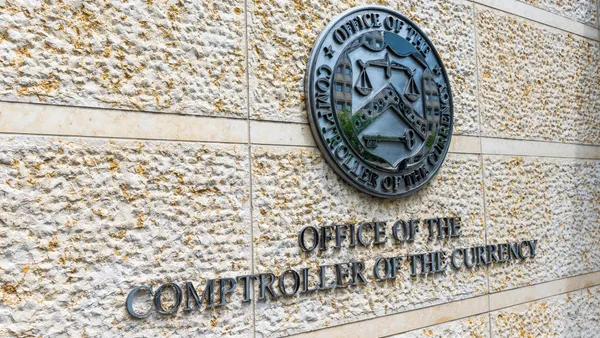Dive Brief:
- Citi reported net income of $4.6 billion Thursday for 2021's third quarter, marking a 48% jump from the $3.2 billion the bank reported a year earlier. However, Citi’s net income declined by 25% from this year's second quarter.
- Year-over-year revenue was down 1%, including the bank’s $860 million pre-tax loss related to the sale of Citi’s Australia consumer bank. Citi’s Q3 revenue of $17.2 billion declined 2%, from $17.5 billion, compared with the previous three-month span.
- Citi’s Q3 profit was driven by the release of $1.62 billion in loan-loss reserves stashed away earlier in the COVID-19 pandemic.
Dive Insight:
Investment banking revenue shot up 39% year over year for Citi, to $1.9 billion. Equity markets rose 40%, to $1.2 billion. However, operating expenses for Citi rose by 5% to $11.5 billion in Q3.
Citi's global consumer banking revenue fell by 13% since last year, partially driven by the spinoff of Citi's Australia consumer unit, which was announced in August.
"Overall, I am quite pleased with $4.6 billion in net income given the environment we are operating in," Citi CEO Jane Fraser said in a statement. "While we have much work ahead, we are getting results from the investments we have been making and seeing both the strength and durability of our franchise."
Like JPMorgan Chase, Bank of America and Wells Fargo, Citi released funds it had set aside earlier in the pandemic. By comparison, Citi added $436 billion to those reserves a year earlier, Reuters reported.
The bank saw mixed results in the third quarter where it is an industry leader. Although card purchases were up 20% year-over-year for Citi, the world's largest card issuer, revenue from that silo is down 4% year-over-year. Spending on cards increased 40% in Q2 2021, while revenue fell 11%.
"While strong consumer balance sheets have impacted lending, we are seeing higher consumer spending across our cards products," Fraser said.














